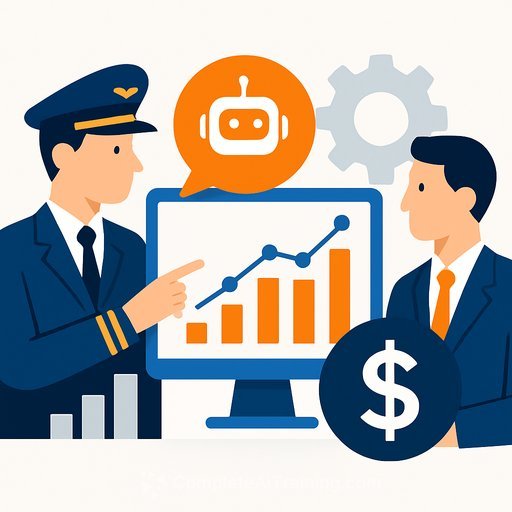AI As Capacity: Goldman Sachs CEO's Playbook for Growth
"AI gives us more capacity to invest in our business." With that line, David Solomon, Chairman and CEO of Goldman Sachs, set a clear tone in a recent conversation on CNBC's Squawk Box. The message: treat AI as an operating model upgrade, not a gadget. The priority is growth, not just cost cutting.
Solomon was frank on market dynamics. Valuations are elevated, but he stopped short of calling it a classic bubble. The growth opportunity is real, and capital is flowing to companies positioned to use AI well. There will be winners and losers.
Inside Goldman Sachs: Augment people, expand capacity
Goldman's approach is simple: put better tools in the hands of smart people. As Solomon put it, "We get technology tools into the hands of really smart people to make them more productive." He contrasted the six-hour, microfiche-heavy stock comps of 40 years ago with what can be done in seconds today. The point: the talent still matters most; the tools expand what that talent can do.
The aim is to automate routine work so teams spend more time with clients and on high-value decisions. This is about reach and output, not a blunt headcount story. More time with clients. More deals touched. More ideas tested.
One Goldman Sachs 3.0: Rebuild core processes
Solomon described a firm-wide push-"One Goldman Sachs 3.0"-to rework processes end to end. "This technology gives us the right and the ability for the first time to reimagine these processes and really do them entirely differently," he said. The target is meaningful efficiency that gets reinvested back into growth.
This is the key shift for executives: don't let automation savings stall on a spreadsheet. Turn saved hours into new products, new client touchpoints, and faster cycle times.
Market signal: Every CEO is on this
According to Solomon, every CEO he talks with is focused on process automation for efficiency and productivity. The pace of change is quick, which creates an unsettled transition in roles. The economy adapts. So do firms. Goldman has 13,000 engineers today-roles that barely existed there 25 years ago.
The practical takeaway: reskill and redeploy. Jobs evolve. Capacity increases. Growth follows.
Executive brief: What to do next
- Pick 3-5 workflows that drive cost or client friction. Stand up 90-day automation sprints with clear owners and milestones.
- Create an AI Enablement squad (Ops, Engineering, Risk, Legal, Data). Give it a single product owner with budget and decision rights.
- Reinvest time savings. Redirect at least 50% of freed hours to client work, sales motions, and product experiments.
- Set guardrails early: data governance, model risk standards, human-in-the-loop checkpoints, and audit trails.
- Adopt a portfolio approach to vendors to avoid lock-in: foundational models, orchestration, and targeted point solutions.
- Reskill managers and analysts. Start with prompt fluency, workflow automation, and data literacy. See AI courses by job for fast pathways.
- Communicate role changes with clarity. Define new responsibilities, expected outcomes, and success metrics.
Metrics that matter
- Cycle time per core process (pre vs. post automation)
- Cost per transaction or case
- Client-facing time per employee and client NPS/CSAT
- Error rates, rework, and model accuracy trends
- Hours saved and how they're reinvested (growth vs. cost)
- Revenue lift tied to AI-enabled initiatives
Capital and operating model
Fund AI like a product line, not a side project. Allocate budget across process redesign, client experience, and new bets, with clear hurdle rates and stage gates. Keep change manageable: small teams, short cycles, transparent wins.
Risk to manage actively
- Data privacy and IP leakage
- Model drift and reliability in production
- Vendor concentration and switching costs
- Change fatigue and morale
- Regulatory expectations and documentation
Solomon's stance is pragmatic and optimistic: AI expands capacity so you can invest harder in the business. Use it to rebuild how work gets done, empower your best people, and push gains back into growth. If you lead with process, guardrails, and clear reinvestment, you give your company more shots on goal.
If you're structuring a reskilling plan for your org, explore focused tracks for leaders and teams here: Courses by job and AI tools for finance.
Your membership also unlocks:






